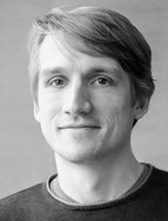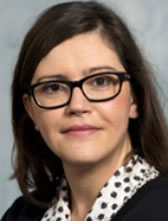CPS Meeting 2019
Please find informations on our final project report meeting here:
Conference report:
PDF-File (1,7 mB)
Conference website:
www.cps2019.de
Bultmann/Lang
Genetic Code Expansion for Protein-Protein and Protein-DNA Interaction Studies in Dynamic Cellular Systems
The incorporation of unnatural designer amino acids into proteins at defined sites in living cells and organisms, via genetic code expansion, has provided new insights into biological processes that are challenging or impossible to address by classical approaches. Recent developments, such as genome engineering in Escherichia coli and knockout of bacterial release factor RF1 have seen tremendous progress in making amber suppression very efficient for incorporation of unnatural amino acids (UAAs) in bacterial hosts. The efficient, high protein yielding, site-specific incorporation of UAAs into proteins in mammalian cells, represents however still an outstanding challenge. A recent study reported increased protein levels, demonstrating that genetic code expansion can be optimized for mammalian cells.
So far, however, all systems for site-specifically incorporating UAAs into proteins in mammalian cells rely on transient transfections. This leads to highly variable expression yields between cells, limits its use to small-scale experiments, offers no (or only laborious) high content (e.g. proteomics) or screening possibilities and can thereby not be used to study dynamic processes (e.g. differentiation) in biological systems.
To overcome these limitations we propose to develop a stable, genomically integrated system for the site-specific introduction of UAAs into proteins in mammalian cells. We will furthermore develop new approaches and bioorthogonal chemistries for studying protein-protein and selectively protein-DNA interactions in live cells by introducing new photo-crosslinking moieties. Combining these efforts will allow us to study transient and weak protein interactions as well as the spatio-temporal localization and kinetics of target proteins during dynamic processes such as cellular differentiation.
To achieve this we aim to (i) integrate the Pyrrolysyl tRNA Synthetase (PylRS)/tRNA system stably into precise genomic loci of mouse and human cells by using a CRIPSR/Cas based genome engineering approach, (ii) develop new light induced bioorthogonal reactions that allow specific DNA-protein crosslinking via [2+2] photocycloaddition with high spatio-temporal resolution, and finally (iii) combine the stable transgenic PylRS/tRNA system with the newly developed derivatives for DNA specific photo-crosslinking to study the spatio-temporal localization, interactions and dynamics of the DNA-methyltransferase DNMT3B during epiblast differentiation. Our study will expand the utility of genetic code expansion for studies of highly dynamic processes as well as large-scale experiments in mammalian cells. The novel chemistries we aim to develop will be valuable tools for the study of localization and kinetics of DNA interacting factors.

Dr. Sebastian Bultmann
Biozentrum / Ludwig Maximilians University Munich
Großhadernerstr. 2
82152 Planegg-Martinsried
Tel.: +49 89 218 074 233
Fax: +49 89 218 074 236

Prof. Dr. Kathrin Lang
Technische Universität München / Fakultät für Chemie
Lichtenbergstr. 4
85748 Garching
Tel.: +49 89 289 13 836
Publications within the SPP 1623 project
S.L. Scinto, D.A. Bilodeau, R. Hincapie, W. Lee, S.S. Nguyen, M. Xu, C.W. am Ende, MG Finn, K. Lang, Q. Lin, J.P. Pezacki, J.A. Prescher, M.S. Robillard, J.M. Fox*
Nat Rev Methods Primers2021, 1,30
Bioorthogonal chemistry
Link to the article
M.D. Bartoschek, E. Ugur, T.A. Nguyen, G. Rodschinka, M. Wierer, K. Lang*, S. Bultmann*
Nucleic Acids Research2021, gkab132
Identification of permissive amber suppression sites for efficient non-canonical amino acid incorporation in mammalian cells
Link to the article
S.V. Mayer1, A. Murnauer1, M.K. von Wrisberg, M.L. Jokisch, K. Lang*
Angew. Chem. Int Ed.2019, 58, 15876-15882
Photo-Induced and Rapid Labeling of Tetrazine-Bearing Proteins via Cyclopropenone-Caged Bicyclononynes
Link to the article
K. Lang*
Biochemistry2019, 58, 2703-2705 (invited news and view)
Installing Terminal-Alkyne Reactivity into Proteins in Engineered Bacteria
Link to the article
M. Reille-Seroussi, S.V. Mayer, W. Dörner, K. Lang and H.D.D. Mootz*
Chem. Comm.2019, 55, 4793-4796
Expanding the Genetic Code with a Lysine Derivative Bearing an Enzymatically Removable Phenylacetyl Group
Link to the article
M. Fottner, A-D. Brunner, V. Bittl, D. Horn-Ghetko, A. Jussupow, V.R.I. Kaila, A. Bremm and K. Lang*
Nat Chem Biology2019, 15, 276-284
Site-specific ubiquitylation and SUMOylation using genetic code expansion and sortase
Link to the article
T.A. Nguyen, M. Cigler, K. Lang*
Angew. Chem. Int. Ed.2018, 57, 14350-14361
Expanding the Genetic Code to Study Protein–Protein Interactions
Link to the article
K. Lang*
ChemBioChem 2018, 19, 115-120 (Conference Report)
Building Peptide Bonds in Haifa: The Seventh Chemical Protein Synthesis (CPS) Meeting
Link to the article
M. Cigler1, T.G. Müller1, D. Horn-Ghetko, M.K. von Wrisberg, M. Fottner, R. S. Goody, A. Itzen, M.P. Müller, K. Lang*
Angew. Chem. Int. Ed. 2017, 56, 15737-15741
Proximity-triggered covalent stabilization of low affinity protein complexes in vitro andin vivo
Link to the article
T. Anton, S. Bultmann
Nucleus 2017, 8(3), 279-286
Site-specific recruitment of epigenetic factors with a modular CRISPR/Cas System
Link to the article
S. Mayer, K. Lang
Synthesis 2017, 49, 830
Tetrazines in Inverse-Electron-Demand Diels-Alder Cycloadditions and Their Use in Biology
Link to the article

